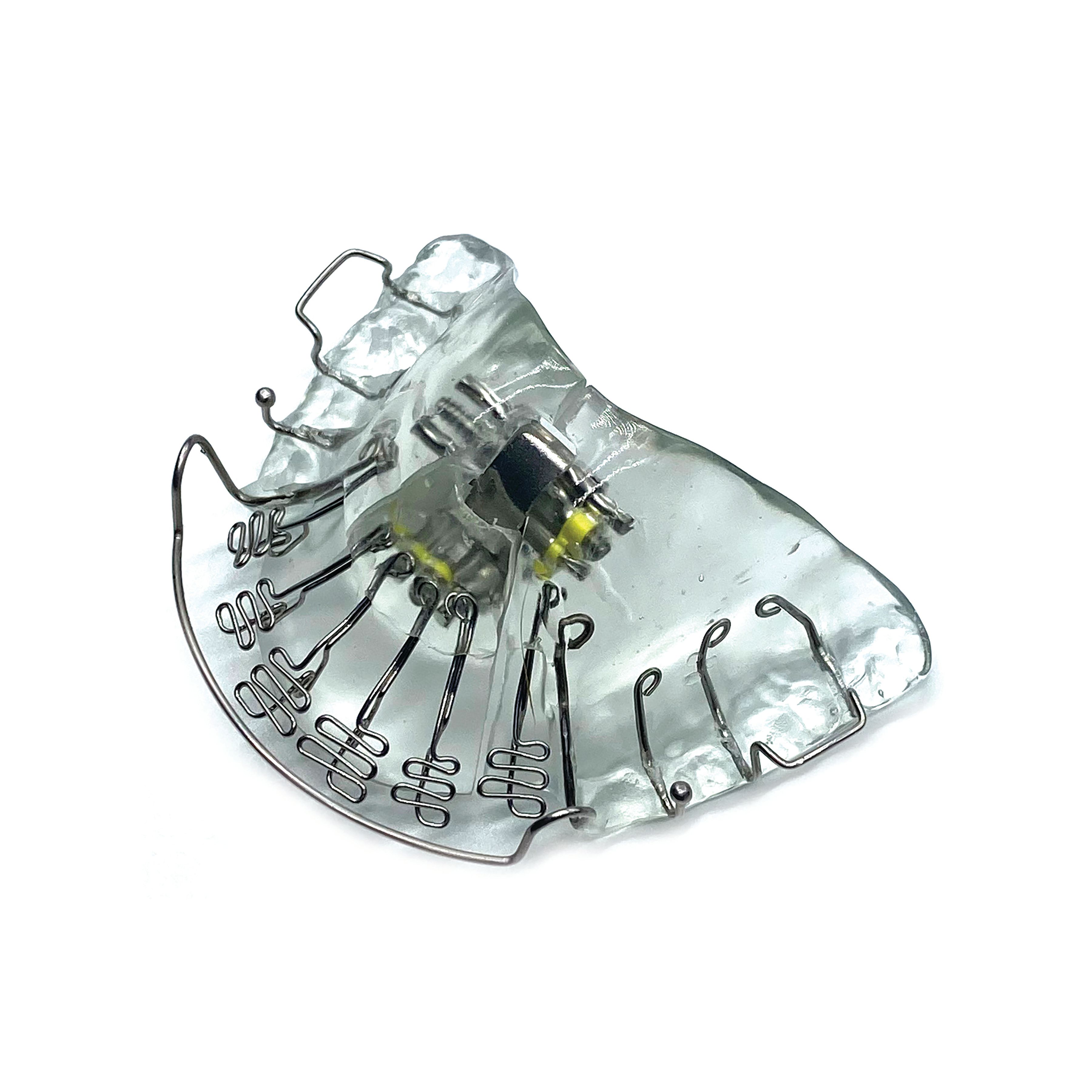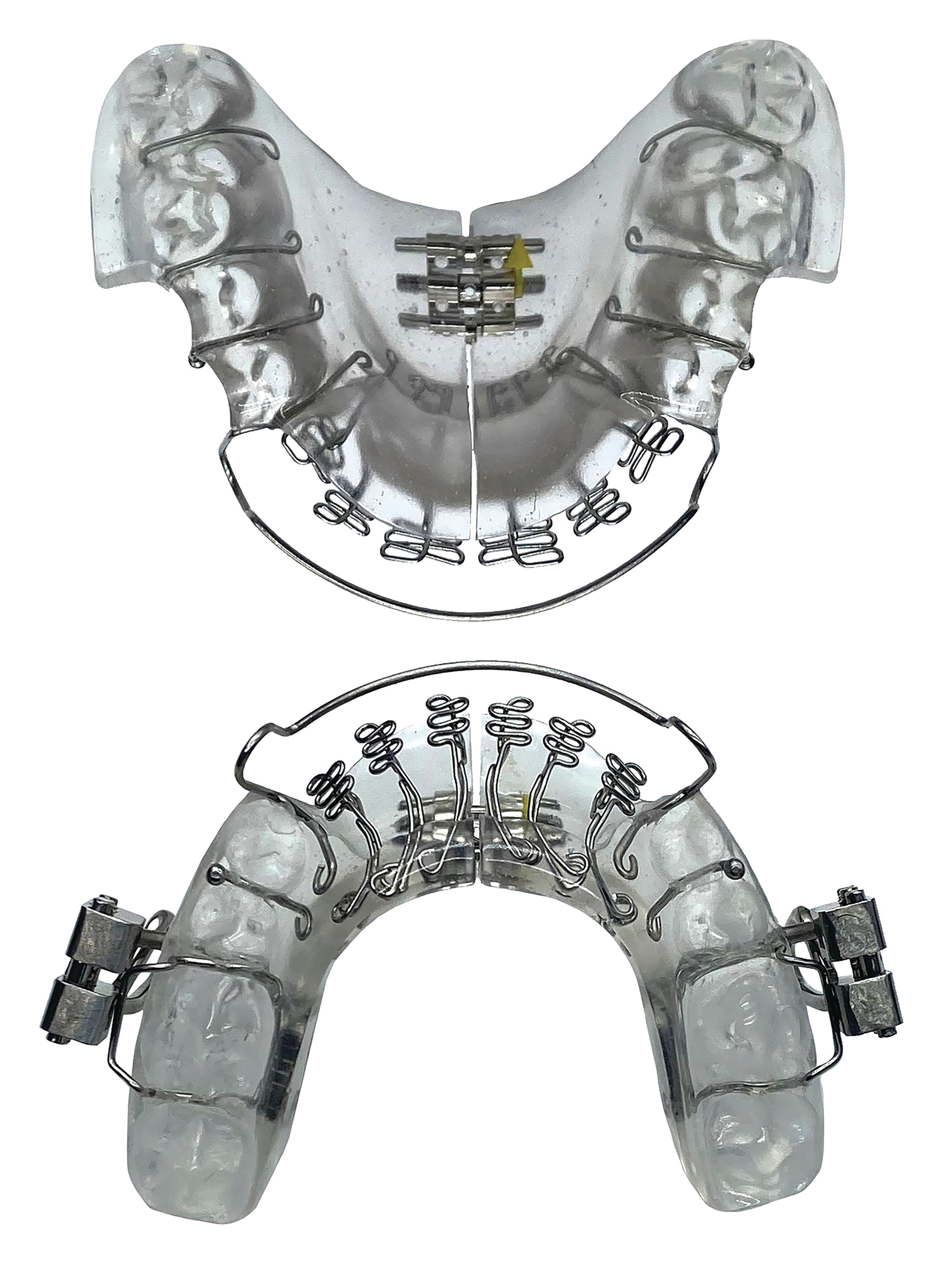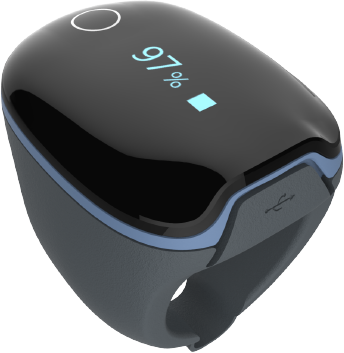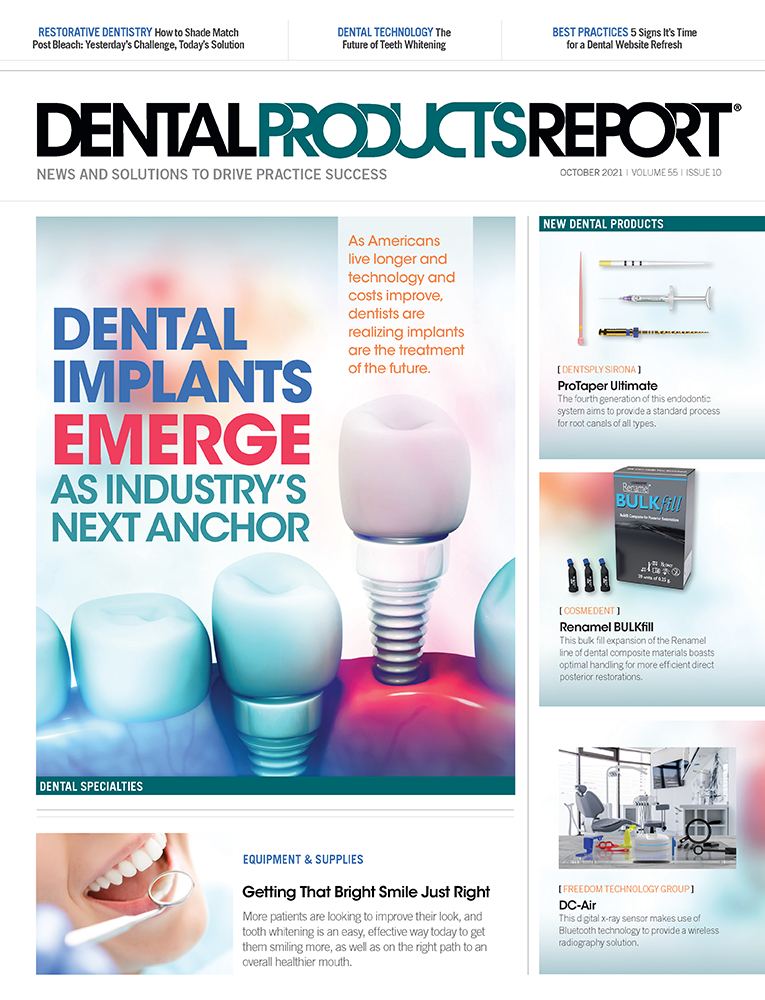A Truly Complete Systemic Approach to Sleep Apnea
The Vivos System uses multidisciplinary modules to treat sleep-disordered breathing and sleep apnea.
It’s estimated that 22 million Americans have sleep apnea.1 Obstructive sleep apnea (OSA) specifically is linked to severe medical complications, such as high blood pressure, heart disease, stroke, type 2 diabetes, liver problems, and metabolic syndrome.2,3
Sleep apnea is more than just a decorative way to describe “snoring,” and snoring can in fact be a sign that an individual has a sleep disorder. Other symptoms include daytime drowsiness or fatigue; decreases in focus, concentration, and motor skills; and dry mouth or headaches when waking up.2
The DNA appliance® is registered with the FDA as Class I device for palatal expansion.

Sleep apnea occurs when breathing repeatedly starts and stops.2 In OSA, the muscles in the back of the throat relax, allowing the airway to narrow or close as you inhale.2 In response to the lack of oxygen, the brain briefly lifts you out of sleep to reopen the airway.2 This happens throughout the night, possibly between 5 and 30 times or more each hour.3 This stop in airflow to the brain releases a stress hormone, which, over time, can lead to heart disease, according to the American Heart Association.3
Despite this link, about 80% of cases of moderate or severe OSA go undiagnosed.1 This is why Dean Raio, DDS, has been treating his patients' sleep-disordered breathing with the Vivos System. Dr Raio, who has 3 practices in Manhattan and Long Island, New York, has been using Vivos appliances for about 6 years.
“I think that everybody takes breathing for granted,” Dr Raio says. “We automatically do it. When you think about it, we only need 3 things for survival: We need food, we need water, and we need oxygen. We can probably go 30 days without food, maybe 3 days without water, but only about 3 minutes without oxygen. When little focus is put on breathing, it changes the way that person lives or sleeps.”
Dr Raio treats patients of all ages for sleep apnea, which is why he appreciates that Vivos Therapeutics offers different appliances for adults and children. The Vivos oral appliances address the orofacial anomalies known to be associated with sleep apnea. Many people may not think that children suffer from sleep apnea, which can cause a loss of focus that is often misdiagnosed as, or blamed on, behavioral issues or attention-deficit/hyperactivity disorder, not a loss of sleep, he explains.
“As adults, we make that connection of, ‘Hey, you know what? I didn’t sleep great last night; let me have my coffee.’ They don’t make that connection with children,” Dr Raio explains. “So that’s another benefit for the children—their math scores go up, their reading scores go up when they’re able to sleep because now they can focus during the day and they’re not feeling miserable.”
The Vivos patient journey begins with an at-home FDA-cleared test suitable for adults or children, VivoScore™, which is a ring recording device that patients wear to bed. Its algorithms evaluate sleep quality and provide clinical output required by physicians to diagnose sleep apnea, and its compatible mobile and cloud applications give patients and clinicians access to valuable sleep data.
Vivos’ mRNA appliance® has 510(k) clearance from the FDA as a Class II medical device for the treatment of snoring. mild to moderate OSA, and sleep-disordered breathing.

Vivos features 3 unique oral appliances: (1) the mmRNA appliance®, which has just received 510(k) market clearance as a Class II device, from the FDA for the treatment of mild to moderate OSA, and snoring in adults; (2) the mRNA appliance®, which has received 510(k) clearance as a Class II device for the treatment of snoring and mild to moderate OSA; and (3) the DNA appliance®, which is registered with the FDA as a Class I device for palatal expansion.
“Vivos oral appliances are very different compared with other mandibular advancement devices on the market, which just sort of bring the lower jaw forward while the person sleeps and compared with a CPAP [continuous positive airway pressure], which is just forced air going into a person’s upper airway, basically inflating the upper airway like a balloon and holding it open so that it doesn’t close,” Dr Raio says. “The Vivos System…addresses the root cause of the issue, which is developmentally that most of us have small upper airways and underdeveloped jaws. The Vivos System jumps in there and changes the shape and the size of the upper airway and the oral cavity. So, from what I’ve seen in my own patients, we can get stable and long-term changes utilizing the Vivos treatment protocol.
According to Dr Raio, REM sleep is the part of the sleep cycle in which dreams are said to be the most vivid. This is also when a person enters muscle atonia, or reduced muscle tone throughout the body, also called REM sleep muscle paralysis.4
This prevents us from acting out our dreams, Dr Raio explains, and because the tongue is a muscle, it too is relaxed during this sleep stage.
“So, what happens to a person is when they go into these deep stages of sleep, the tongue typically slides to the larger part of the anatomy, which is the throat, and it blocks the airway,” Dr Raio says. “The Vivos appliance is making those spaces larger so that the person has a larger airway, and the tongue has a larger home to stay in while the person sleeps.”
The Vivos treatment protocol is also using certain specific forms of myofunctional therapy to help patients “train” facial muscles to help prevent this from happening. The company announced its new MyoCorrect service this spring. Trained therapists will offer Vivos providers access to orofacial myofunctional therapy via telemedicine technology. “The patients actually work with a myofunctional therapist—it’s almost like yoga for the face and the upper airway,” Dr Raio adds.
Dentists are in a unique position to treat sleep apnea. According to the American Dental Association, “dentists are the only health care providers with the knowledge and expertise to provide oral appliance therapy.”5 Dr Raio agrees that dentists should be sleep medicine advocates.
An advanced home diagnostic device, VivoScore uses a biometric recording device and cloud-based software to measure sleep quality, heart rate, and apnea events.

“General doctors try to treat sleep apnea as well. They try to do surgeries; they give their patients CPAPs,” he says. “But the root cause is underdevelopment of the upper airway and the oral cavity, and that’s where dentists live. And it happens to be specific kinds of oral appliances that can act upon these spaces to get growth. Although these appliances don’t act on the teeth, they are toothborne—they rely on the teeth to stay in position so that the device can do what it’s supposed to do. And that’s why it’s dentists who are leading the charge in this area,” Dr Raio says.
There’s been an evident change in the patients Dr Raio treats using the Vivos System, as well. They’re getting more sleep, they’re sharper and more focused, and they just feel better overall, he says. Some patients are so grateful that they come in and hug him and his staff, he says.
“The people who have sleep apnea are said to never really be fully asleep and never really be fully awake. And that’s a horrible limbo to be living in,” Dr Raio says. “They’re so grateful. It’s a systemic approach for a dentist to take for their patients.”
References
- Sleep apnea information for clinicians. American Sleep Apnea Association. Accessed August 10, 2021. https://www.sleepapnea.org/learn/sleep-apnea-information-clinicians/
- Sleep Apnea. Mayo Clinic. Updated July 28, 2020. Accessed August 10, 2021. https://www.mayoclinic.org/diseases-conditions/sleep-apnea/symptoms-causes/syc-20377631
- What you need to know about how sleep apnea affects your heart. American Heart Association. Updated November 10, 2020. Accessed August 10, 2021. https://www.heart.org/en/health-topics/sleep-disorders/sleep-apnea-and-heart-disease-stroke
- REM Behavior Disorder. Stanford Health Care. Accessed August 10, 2021. https://stanfordhealthcare.org/medical-conditions/sleep/nighttime-sleep-behaviors/rem-behavior-disorder.html
- ADA adopts policy on dentistry’s role in treating obstructive sleep apnea, similar disorders. American Dental Association. October 23, 2017. Accessed August 10, 2021. https://www.ada.org/en/press-room/news-releases/2017-archives/october/ada-adopts-policy-on-dentistry-role-in-treating-obstructive-sleep-apnea
Clinician Biography
Dean Raio, DDS, is a dentist at Raio Dental and Rejuvenation Dentistry based in Manhattan and Long Island, as well as a diplomate of the American Sleep and Breathing Academy. Dr Raio incorporates the Vivos System to address dental tissue anomalies that are known to be associated with OSA and other debilitating health conditions.

ACTIVA BioACTIVE Bulk Flow Marks Pulpdent’s First Major Product Release in 4 Years
December 12th 2024Next-generation bulk-fill dental restorative raises the standard of care for bulk-fill procedures by providing natural remineralization support, while also overcoming current bulk-fill limitations.